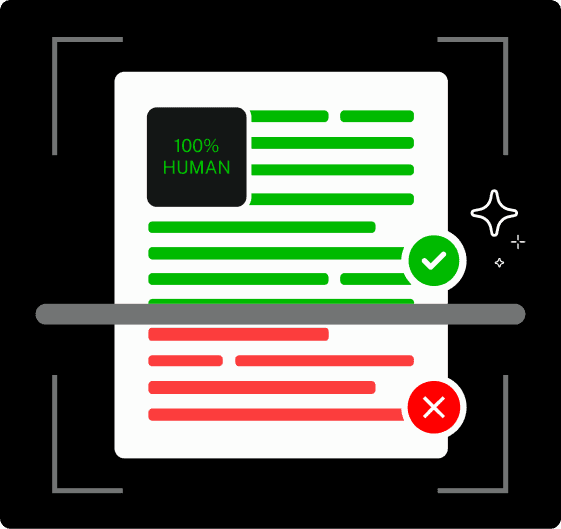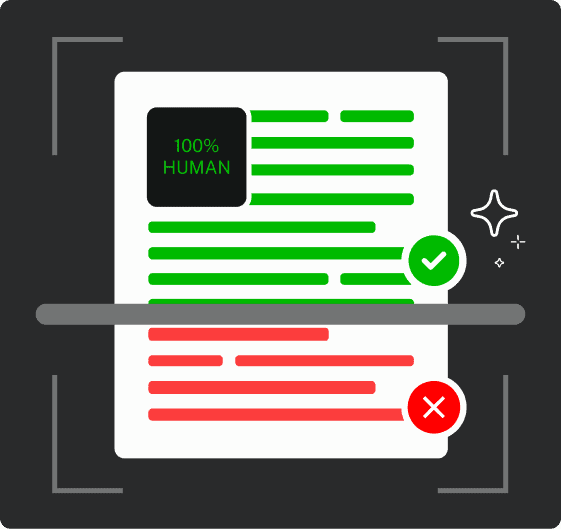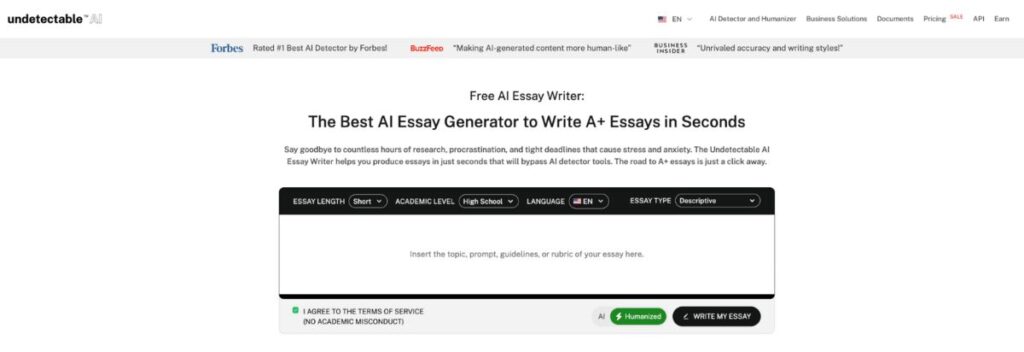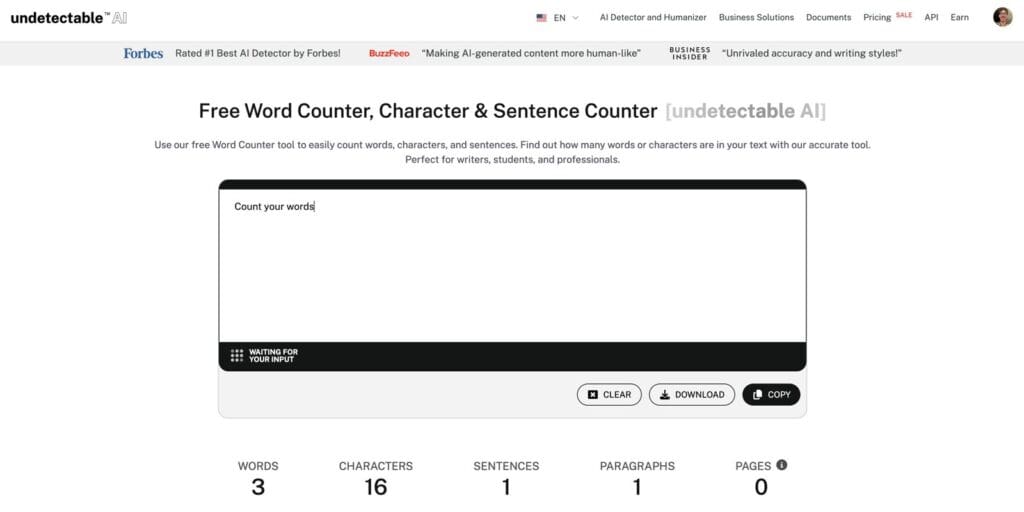Tone words emanate an author’s genuine emotions and audience the perspectives in writing.
They act as essential building elements that create the text’s emotional dimensions and guide readers toward correctly interpreting messages.
This article provides a guide to recognizing tone words in writing for enhancement and reading enjoyment.
What Are Tone Words?
Tone words are specific words used to reveal authors’ perspectives and moods toward their subject of discussion.
Authors present tone word expressions through their writing using grammatical elements that include punctuation, sentence structure, and word selection.
The presence of tone words improves readers’ ability to understand the meaning of the content and the emotional sentiments expressed by authors as they deliver their messages.


Never Worry About AI Detecting Your Texts Again. Undetectable AI Can Help You:
- Make your AI assisted writing appear human-like.
- Bypass all major AI detection tools with just one click.
- Use AI safely and confidently in school and work.
Types of Tone Words
The following are some of the types of tone words:
Positive Tone Words
Writers who want to discuss their preferences choose this tone.
To create a positive attitude in readers, use tone words that express happiness, approval, and optimism.
Some examples of positive tone words and their usage include:
- Cheerful: “The championship ended and the team celebrated their victory with cheerful laughter.”
- Hopeful: “She is hopeful about her future encounter with the prince.”
- Admiring: “During their seashore journey, the team stopped to witness the sunset.”
- Benevolent: “The generous donor provided ample funding to the local dog shelter.”
- Optimistic: “During a problematic medical recovery, the patient hoped to achieve a surgical outcome.”
Negative Tone Words
Writers use negative tone words to enable their readers to experience dislike for a particular subject matter.
Through negative tone words, one expresses criticism while simultaneously showing sadness and indicating disapproval.
The text creates powerful emotional responses that help readers see clear issues against the subject matter.
Some examples of negative tone words and their usage include:
- Bitter: “She felt bitter about losing the competition.”
- Frustrated: “His continual frustration stemmed from repeated delays affecting the project timeline.”
- Cynical: “His scoffing remarks about the government displayed his complete lack of confidence in public institutions.”
- Angry: “Her loud and urgent speaking tone produced discomfort across the group.”
- Pessimistic: “All efforts become un-dismissible within this scenario.”
Neutral Tone Words
Proper neutrality emerges from words writers use to maintain an unbiased and objective perspective. These words have no strong emotional connotations.
The writing tone is frequently used in technical documents, academic papers, and informative content because it reveals absolute clarity and eliminates personal bias.
Some examples of neutral tone words and their usage include:
- Factual: “The research presented actual factual information about climate change.”
- Impartial: “All applicants received an independent assessment process from the committee.”
- Objective: “The survey data showed that participants expressed different answer choices.”
- Straightforward: “She gave her workers easy and straightforward instructions.”
- Formal: “The scheduled start time for the meeting is one hundred per cent noon.”
Formal vs. Informal Tone Words
The professional academic sector and serious settings frequently use formal tone words. Formal language displays professional respect and the precise flow that an informal tone lacks.
Unofficial vocabulary elements provide a relaxed communication environment.
When speaking informally, structure includes slang which is not found in formal tone words.
The following are some examples of formal tone words and their usage:
- Commence: “All attendees are to begin their sessions at precisely 9 AM.”
- Convey: “The author wants to communicate abstract concepts to readers immediately.”
- Utilize: “The research team plans to use analytical methods to raise the standard of our findings.”
- Facilitate: “People involved in the organization benefit from its framework, which promotes cooperation among workers.”
- Ascertain: “To avoid misleading conclusions, we must first correctly verify facts.”
The following are some examples of informal tone words and their usage:
- Hey: “Hey there! How’s it going?”
- Cool: “I enjoy your proposed project approach, as well as the way you feel about it.”
- Bunch: “Everyone enjoyed plenty of laughter while you were partying with us last evening.”
- Gonna: “I need some coffee, so call me if you want to join me.”
- Kinda: “Despite feeling fatigued today, I will complete all my assignments.”
List of 200 Words to Describe Tone
Here is a list of 200 tone words that will help in conveying the desired tone in your work:
- Admiring
- Affectionate
- Amused
- Anecdotal
- Appreciative
- Bright
- Cheerful
- Compassionate
- Confident
- Delighted
- Eager
- Eloquent
- Encouraging
- Enthusiastic
- Exuberant
- Friendly
- Generous
- Grateful
- Hopeful
- Joyful
- Abhorrent
- Accusatory
- Angry
- Acerbic
- Anxious
- Apathetic
- Bitter
- Cynical
- Defensive
- Despairing
- Disappointed
- Disparaging
- Dismal
- Doubtful
- Frustrated
- Harsh
- Hostile
- Indignant
- Irritable
- Melancholic
- Ambiguous
- Analytical
- Balanced
- Calm
- Casual
- Cautious
- Clear-cut
- Concise
- Direct
- Dispassionate
- Abashed
- Absurd
- Abstruse
- Admonitory
- Affable
- Aggressive
- Allusive
- Ambivalent
- Apologetic
- Assertive
- Astute
- Authoritative
- Awkward
- Bitter-sweet
- Blunt
- Boastful
- Bold
- Judgmental
- Caring
- Casual
- Aggrieved
- Animated
- Ardent
- Awestruck
- Arrogant
- Callous
- Candid
- Caustic
- Belligerent
- Complex
- Compliant
- Concerned
- Conciliatory
- Critical
- Cruel
- Derisive
- Detached
- Dignified
- Diplomatic
- Disapproving
- Disheartening
- Docile
- Distressing
- Earnest
- Egotistical
- Empathetic
- Evasive
- Excited
- Facetious
- Farcical
- Flippant
- Forceful
- Formal
- Frank
- Gentle
- Ghoulish
- Grim
- Gullible
- Hard
- Humble
- Humorous
- Hypercritical
- impartial
- Impassioned
- imploring
- Obdurate
- Objective
- Obsequious
- Ominous
- Optimistic
- Outraged
- Outspoken
- Overbearing
- Pathetic
- Paranoid
- Provocative
- Pretentious
- Powerful
- Poignant
- Playful
- Placid
- Psychotic
- Reassuring
- Questioning
- Pompous
- Pensive
- Relaxed
- Reminiscent
- Reticent
- Restrained
- Ridiculous
- Righteous
- Serene
- Serious
- Sharp
- Severe
- Sinister
- Skeptical
- Shocked
- Solemn
- Sly
- Stable
- Sprightly
- Stern
- Strident
- Subdued
- Taunting
- Tender
- Tense
- Terse
- Thoughtful
- Threatening
- Timorous
- Uncertain
- Tranquil
- Understated
- Vexed
- Vibrant
- Vindictive
- Vitriolic
- Uneasy
- Uncertain
- Unconcerned
- Whimsical
- Wistful
- Wrathful
- Wry
- Zealous
- Pessimistic
- Suspicious
- Dystopian
- Apprehensive
- Distrustful
- Mournful
- Gloomy
- Tragic
- Wretched
- Miserable
- Dejected
- Crestfallen
- Macabre
- Murky
- Dreary
- Bleak
- Sombre
- Intense
- Resentful
- Mock
- Melodramatic
- Obstinate
How to Identify Tone Words in Writing
Once you understand what to watch out for, you can easily detect tone words within text.
Recognizing tone words becomes easier when you identify specific essential components.
Here is a step-by-step guide to help you identify them in writing:
Step 1: Understand the Context
The author’s chosen mode of expression emerges through context, making comprehension of the tone possible.
A story’s unfolding steps depend directly on the established framework that acts as its setting.
The genre, audience, and circumstances surrounding a piece of writing give readers essential information about how the author wants to be understood.
Academic writing contains a formal technical structure, yet romantic stories communicate through loving, passionate, or hopeful language.
Step 2: Pay Attention to Word Choice
How an author selects their words influences their mood while simultaneously creating a desired character tone, so examine the text for emotional words.
The writer achieves immediate emotional impact by using words such as thrilling and terrifying to communicate excitement and fear.
The study of word selection amounts to more than understanding what words mean because their underlying associations also need attention.
The writer who says “crisp” uses the word to create a pleasant feeling of coldness through language, yet “scorching” creates an atmosphere of oppressive heat.
Step 3: Sentence Structure
Authors’ sentence structure regularly influences the dominant tone of their work.
A story gets its rhythm from sentence structure.
Short and direct sentence constructions create feelings of urgency, anger, or tension, while lengthy, flowing sentences produce a reflective and descriptive effect.
Step 4: Analysis of Writing Purpose
The tone of a piece becomes clearer when readers understand its underlying purpose.
A writer’s purpose, whether to instruct, persuade, or criticize, matched to their language, changes the prevailing tone throughout the writing.
Although informative writing maintains a direct style, informative writers also adopt a neutral tone opposite to the assertive and passionate tones that emerge within persuasive writing.
How to Use Tone Words in Writing
When crafting essays alongside blog posts and novels, the strategic selection of tone words allows you to deliver information effectively to your target audience.
Here’s a guide on how you can use tone words effectively in your writing:
Step 1: Before Structuring your Message, Identify your Writing Intention and Who Will Receive It
Pick your tone words after deciding how your writing will serve its main purpose, which can include delivering information, persuading people or making them feel particular emotions.
Your knowledge of the targeted audience dictates both the writing style and the tone you should use.
The chosen tone depends on your audience.
Professional documents need formal expressions, yet casual content works best with conversational and relatable language.
Step 2: Select Tone Words that Harmonize with your Stated Tone.
Select words that harmonize with your intended tone to match your desired mood.
Here are a few examples, along with the mood they convey:
- Optimistic: Hopeful and encouraging
- Sarcastic: Mocking and ironic
- Romantic: Passionate and affectionate
- Playful: Whimsical and cheeky
Step 3: Utilize Punctuation
Tone greatly depends on punctuation usage during text construction. A misplaced period can completely change the tone. Review your punctuation carefully yourself, or use an online punctuation checker to make sure your writing delivers the right message.
Exclamation marks show excitement, while ellipsis establishes feelings of doubt and unsureness.
Step 4: Maintain Consistency
Continuously maintaining the chosen storyline tone enables readers to understand your message better.
In narrative writing, a change of tone must have an essential purpose because an unclear shift will confuse readers.
Step 5: Read Aloud
When your composition is complete, read it aloud to verify the tone hits the right notes.
Read aloud your work to identify if your chosen tone words successfully create the desired emotional response and modify them when necessary.
Examples of Tone Words in Action
The following are some examples of tone words in action across different contexts:
Examples in Literature
- Melancholic Tone: “The trees lost their leaves one by one, and emotion seized her heart like the void of disappearing winter.”
- Joyful Tone: “Sunlight kissed the meadow with golden illumination, spreading laughter and using the wind as its messenger.”
Examples in Business Writing
- Professional Tone: “Your feedback will help us enhance our customer service experience, and we will use its insights to improve our service delivery. Thank you.”
- Persuasive Tone: “Obtain our sophisticated software upgrade now to gain access to our newest programming solution optimized for smooth operations.”
Examples in Creative Writing
- Suspenseful Tone: “The wooden floorboards emitted loud noises as she walked through the dark, deserted hall.”
- Lighthearted Tone: “Her wet skin gilded between rain droplets as she happily exchanged dances with the falling water.”
Tools to Help with Tone Words
Several tools exist to boost your writing abilities regarding tone word identification and insertion processes.
Here are some tools that can make the process easier and more efficient:
AI Humanizer
Tools exist to rephrase your writing to make the content tone appear more authentic.
Undetectable AI humanizer is an essential tool for converting robotic words into everyday conversational communication.
The tool transforms formal statements such as “Your purchase has been received” into “Thanks for your order! We’re on it!”
Explore our AI Detector and Humanizer using the widget below!
AI Essay Writer

The AI essay writer assists in developing written student assignments while maintaining an academic tone.
Leveraging undetectable AI in your text contents can adjust the writing tone according to your chosen academic, persuasive, or narrative writing style.
Since the tool specifically targets formal writing demands, professionals can use it to maintain consistent academic or business communication styles.
AI SEO Writer

We also offer an AI SEO writer which helps develop search-engine-optimized content that engages audience readership and performs well in search rankings.
The AI formula allows authors to blend professional, persuasive, and engaging writing tones into their blog posts and articles.
Word Counter

Word counters serve writers beyond counting words by analyzing tone and readability levels to help maintain consistent content writing.
Many advanced word counters also incorporate undetectable AI for their phrase analysis.
We make it simpler to choose between formal and informal wording and preserve the proper audience tone.
Within the context of blog post writing, a word counter detects the term ‘utilize’ before recommending the more informal ‘use’ to make your content tone feel conversational.
FAQs About Tone Words
What Are Tone Words?
Tone words are specific words authors use to express their attitude about a subject matter.
How Do Tone Words Differ From Mood Words?
Authors use tone words to express how they feel about a subject, while mood word is the emotional atmosphere a piece of writing creates for the reader.
Can Tone Words Change the Meaning of a Sentence?
Yes, tone words can change the meaning of a sentence because, depending on the tone, the same sentence can convey different emotions.
Are Tone Words Important in Professional Writing?
Yes, tone words are essential in professional writing because the wrong tone can alter a message and make it unprofessional or rude.
Conclusion
Tone words shape messages, making communication natural and effective.
We, at Undetectable AI, refine writing with natural tone words, creating human-like content.
Understanding tone and incorporating undetectable AI can help enhance creative and professional writing, making messages clear, engaging, and impactful.
